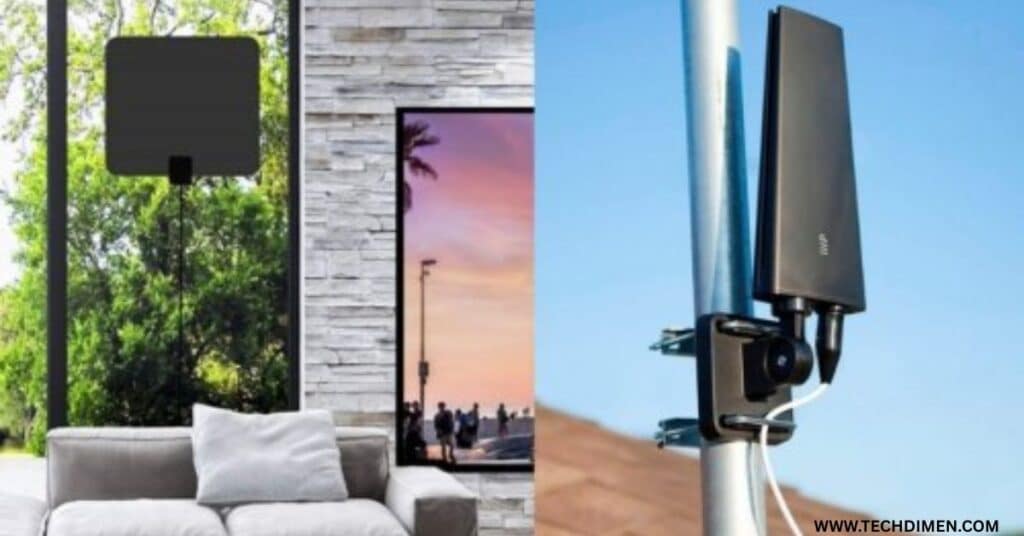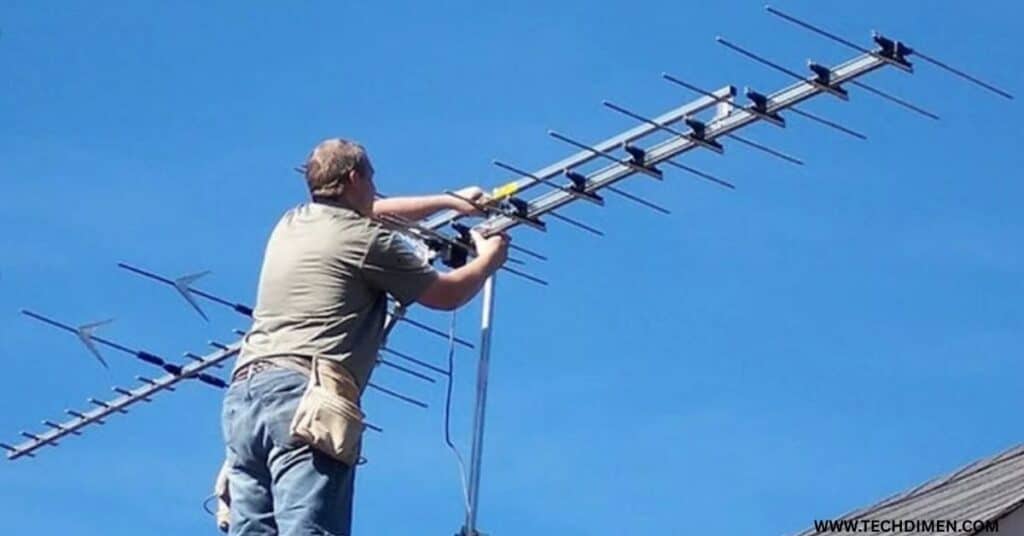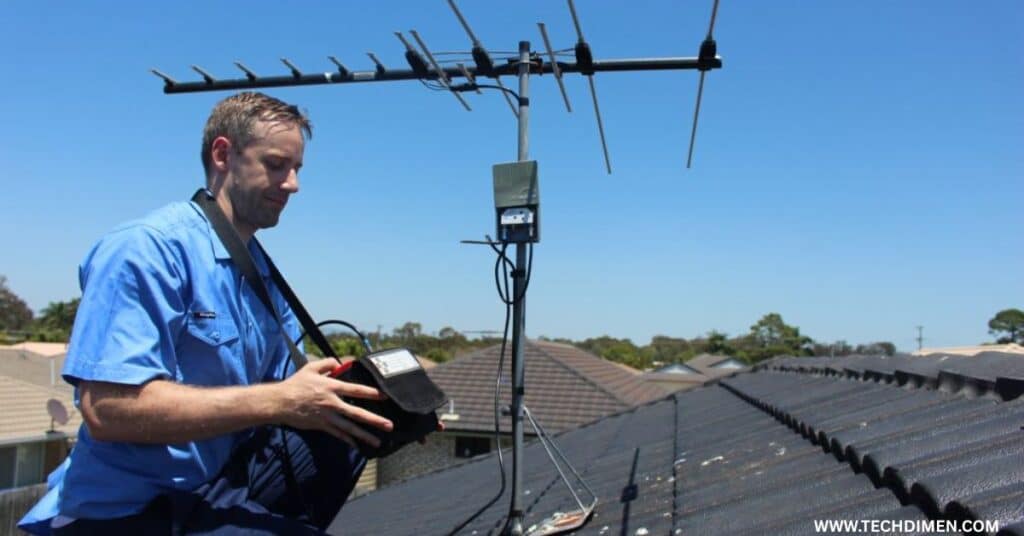In today’s world of digital broadcasting, TV antenna signal quality can make or break your viewing experience. Whether you’re cutting the cord or relying on free over the air (OTA) channels, ensuring strong TV reception is essential. This guide walks you through every practical, effective method to boost your TV antenna signal, troubleshoot common issues, and maximize your signal strength without technical overwhelm.
TV Antenna Signal Basics
Before you improve anything, you need to understand how digital TV signal works. OTA broadcasts transmit from network towers in either UHF or VHF ranges. Your antenna reception depends on your distance from these towers, terrain, interference, and antenna type.
Signal strength refers to the power of the signal received. Signal quality, however, relates to the clarity and integrity of that signal. It’s possible to see full bars of signal power but still experience pixelation due to interference or signal reflection.
Most modern TVs include built in diagnostic tools that help check signal quality and strength. These are often found in the settings menu under options like ‘Antenna’ or ‘Tuner.’ Some users may also benefit from using a dedicated signal meter for more precise measurements.
Causes of Weak TV Signal

Weak signal can stem from several real-world issues. Environmental factors such as buildings, trees, hills, and adverse weather often obstruct signals. Inside your home, metal objects, thick walls, or household appliances can also block or reflect transmissions, creating signal disruption.
Equipment problems may contribute as well. These include poor coaxial cable quality, worn out splitters, long cable runs, or improper antenna orientation. Improper amplifier connection or faulty TV tuners can also degrade signal strength.
Another significant factor is interference. Devices like cell towers, Wi Fi routers, LED lighting, and microwave ovens emit signals that interfere with digital TV signal reception.
Proven Ways to Boost Your TV Antenna Signal
Repositioning your antenna can dramatically enhance signal clarity. Antennas should ideally be placed in elevated positions with a clear line of sight to the broadcast towers. Outdoor setups often outperform indoor ones, but if you’re limited to indoor placement, choose locations near windows and away from large metal surfaces or televisions. Tools such as TV Fool and AntennaWeb can help identify the direction and distance of nearby towers, allowing for more accurate antenna orientation.
Upgrading your antenna is another solid step. If you’re within twenty miles of a broadcast tower, an indoor flat panel model may provide sufficient reception. For locations between twenty and fifty miles, a quality outdoor multidirectional antenna tends to perform better. Those living farther than fifty miles away or in remote areas should consider a high gain directional antenna. If your current antenna is outdated, damaged, or incompatible with modern standards, a full replacement is often the best solution.
Cable quality and setup significantly influence reception. Choose RG6 coaxial cable for its improved shielding and reduced signal loss. Keep your cable lengths as short as possible to avoid unnecessary loss, and do not coil or loop excess cable. Ensure all connectors are corrosion free and properly installed using compression fittings to maintain clean signal transfer.
Installing a TV antenna booster can enhance performance, especially when signal strength is naturally weak. Preamplifiers are typically installed close to the antenna and help maintain signal strength over long cable distances. Distribution amplifiers, on the other hand, are designed to maintain strength when the signal is split among multiple TVs. Keep in mind that over amplifying a strong signal may introduce distortion. Therefore, boosters should be installed only when there’s a measurable drop in signal clarity.
Splitters also affect signal strength. Each split introduces a small amount of signal loss. If you have more TVs connected than necessary, remove any unused split paths. In situations where multiple devices must remain connected, consider using a powered splitter to offset the inherent signal drop.
Example Wiring Diagrams for Better Setup

In a typical single TV system that includes an amplifier, the antenna captures the signal, which then travels through a preamplifier and down a coaxial cable to the TV. In a multi TV system, the antenna feeds into a distribution amplifier, which then sends equal-strength signals to each connected television. Proper planning and secure wiring in both setups are crucial to prevent signal degradation.
Common Signal Problems and Fixes
If your TV shows a “No Signal” message or fails to display channels, start by verifying the correct input is selected and re-scan for channels. Examine the cable connections and confirm the amplifier is receiving power. In some cases, channels may vanish unexpectedly due to antenna shifting or new electronic interference in the area. Stabilizing the antenna and isolating interfering devices often resolves this.
Low signal strength and pixelation frequently point to antenna misalignment or long, unoptimized cable runs. Elevating your antenna or adding a preamplifier can solve these problems by providing a stronger and more consistent signal feed.
Boosting Indoor Antenna Performance

Indoor antennas require strategic positioning to perform at their best. Ideally, place them near exterior facing walls or close to windows. Avoid locations behind televisions or near metal objects. In some low signal areas, adding reflective surfaces, like carefully placed aluminum foil, can help redirect and concentrate the signal. Compact indoor amplifiers are another way to achieve better performance when outdoor installation isn’t an option.
Do How to Boost Your TV Antenna Signal Actually Work?
TV signal boosters are effective in specific scenarios. If the signal is weakened by long cables, multiple TVs, or distance from towers, a booster can provide noticeable improvements in clarity and strength. However, when used in areas with already strong reception, they can introduce distortion or reduce signal quality. Correct installation and choosing the appropriate type of booster are essential to ensure improvements rather than new problems.
TV Antenna Orientation: Critical Yet Overlooked
Antenna orientation can’t be rushed. Start by pointing the antenna in the general direction of the broadcast towers, then adjust it slowly. After each adjustment, perform a full channel scan and allow your tuner time to process changes. Note which positions yield the best results and keep a log of the strongest configurations. For directional antennas, precision is key, so using a digital compass or antenna locator app can make alignment much more accurate.
Signs You May Need a TV Antenna Replacement

Some situations warrant a complete antenna replacement. Visible damage such as rust, cracking, or bent components often indicates reduced performance. If your antenna can’t support current digital broadcasting standards or fails to provide a consistent signal even with a booster, it’s time to upgrade. Consider high-quality antennas from reputable manufacturers like ClearStream, Winegard, and Channel Master, which are known for durability and reliability in various reception environments.
Advanced Troubleshooting Checklist
Begin your troubleshooting by carefully examining all coaxial cables for wear, corrosion, or loose fittings. If your setup includes a splitter, try bypassing it temporarily to see if reception improves. Swap in a different antenna or test your current one on another TV to rule out tuner issues. Monitor signal consistency at various times of the day to identify patterns of interference. Proper grounding of your antenna mast helps eliminate static, and adding ferrite cores to power cables can reduce background electrical noise.
TV Antenna Signal Boosting Tips
| Tip | What It Does | Best For |
|---|---|---|
| Move the Antenna | Improves line of sight to towers | Indoor setups |
| Raise the Antenna | Reduces obstructions | Rooftops, attics |
| Use an Amplifier | Boosts weak signals | Long cables, rural areas |
| Upgrade Cables | Cuts signal loss | Old or cheap wiring |
| Avoid Interference | Stabilizes reception | Homes with electronics nearby |
| Rescan Channels | Finds new or moved channels | All users |
| Ground the Antenna | Adds safety from surges | Outdoor antennas |
| Use Outdoor Antenna | Pulls in stronger signals | Poor indoor reception |
| Add Splitter Amp | Keeps strength across TVs | Multi TV homes |
| Combine Antennas | Captures more channels from all directions | Mixed tower locations |
FAQs How to Boost Your TV Antenna Signal
What are the most common reasons for weak antenna signals?
Signal weakness often stems from several factors working against reception. These may include large obstacles like buildings, trees, or hills that block line-of-sight transmission. Weather conditions such as heavy rain or thick clouds can also reduce signal strength. Additionally, interference from other electronics in the home, such as routers or microwaves, can disrupt reception. Sometimes, the antenna itself may be poorly positioned or too far from the nearest broadcast tower.
How can I increase the strength of my TV antenna signal?
There are several effective methods for enhancing your TV antenna signal. You can start by adjusting the direction of the antenna toward the broadcast towers. Elevating it, preferably on the roof or in an attic, typically yields better reception. Moving the antenna closer to a window and away from walls or electronic devices can help reduce interference. Another option is to install an amplified signal booster to enhance incoming transmissions, especially in rural or fringe areas. Replacing old or low-quality coaxial cables with properly shielded ones also contributes to better signal quality.
Are signal boosters effective for all types of antennas?
Signal boosters, also known as amplifiers, can be very effective in specific situations. If your home is located far from broadcast towers or if you’re using long coaxial cables that naturally weaken the signal, a booster can improve performance. However, it’s important to note that amplifiers do not create signal from nothing. If the base signal is already poor or filled with noise, the amplifier might just boost the noise, not the clarity. Therefore, they work best when the original signal is weak but still clean.
Where should I place my antenna to get the best results?
For optimal performance, placing your antenna as high as possible is key. Rooftops and attics are ideal because they minimize obstructions. If you’re using an indoor antenna, placing it near a window that faces the general direction of your local broadcast towers typically improves reception. Avoid areas with thick concrete walls, large metallic objects, or electronic devices that could cause interference. Resources like AntennaWeb and TV Fool can help you determine the precise direction of your nearest towers based on your address.
Can bad weather interfere with How to Boost Your TV Antenna Signal reception?
Yes, weather can impact antenna signal reception. Conditions like heavy rainfall, snowstorms, or dense fog may temporarily weaken or distort the signal. While most antennas are designed to perform through mild weather variations, severe conditions can cause pixelation or complete loss of picture until the skies clear. This is particularly noticeable in areas with already marginal signal strength.
What is a TV antenna amplifier, and should I use one?
A TV antenna amplifier is a device that strengthens the signal received by your antenna before it reaches the TV. It’s particularly useful for long cable runs where signal degradation is likely or in rural areas with weak reception. You may need one if your antenna is located far from your television, or if you’re splitting the signal across multiple TVs in your home. However, amplifiers are not always necessary and may even reduce performance if used with a strong existing signal.
Does cable length affect the antenna signal?
Yes, the length of the coaxial cable can influence the strength of your antenna signal. Longer cables naturally introduce signal loss due to resistance. This is why it’s crucial to use high-quality cables, preferably RG6, and keep the length as short as possible. If a long cable run is unavoidable, adding a preamplifier close to the antenna helps reduce the loss before the signal travels down the line.
Which is better: How to Boost Your TV Antenna Signal?
Outdoor antennas generally provide better reception than indoor ones. They have a wider range, can be mounted higher to bypass obstacles, and are less affected by indoor interference from electronics or walls. Indoor antennas are more convenient to install and work well in urban areas close to broadcast towers. However, for those in rural or heavily obstructed environments, outdoor antennas tend to deliver more reliable performance.
How can I find out which channels I should be getting?
You can easily discover available channels in your area by using online tools like the FCC’s DTV Reception Maps, AntennaWeb, or TV Fool. These platforms allow you to enter your home address or zip code to receive a customized list of nearby broadcast towers and the channels they transmit. The direction and distance from each tower are also provided, helping you fine-tune your antenna placement for maximum effectiveness.
Why am I getting some channels clearly but not others?
Inconsistent channel reception is often due to signal differences in the frequency bands. Some stations broadcast in UHF, while others use VHF, and not all antennas are designed to handle both. Additionally, differences in tower location, signal power, and interference levels can affect which channels you receive clearly. You may need a multi directional antenna or one that supports both UHF and VHF to solve this issue.
Final Thoughts
Boosting TV antenna signal strength doesn’t require professional installation or a hefty investment. With attention to positioning, cable quality, amplifier use, and accurate tuning, your digital reception can improve dramatically. Whether you’re resolving issues related to weak reception, interference, or hardware limitations, each step you take gets you closer to a clearer, more consistent viewing experience. Stay patient, test different configurations, and enjoy the benefits of reliable over the air television.

Jhon AJS is a tech enthusiast and author at Tech Dimen, where he explores the latest trends in technology and TV dimensions. With a passion for simplifying complex topics, Jhon aims to make tech accessible and engaging for readers of all levels.







